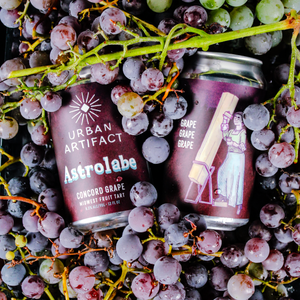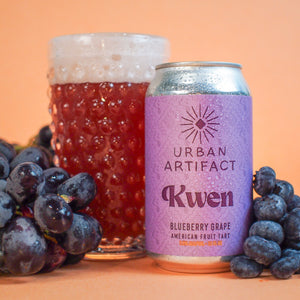Part 5: Yeast, formerly known as Godisgood
Yeast, such a strange and world-changing fungi. Not even known as a thing to exist for thousands of years, up until 1857 thanks to our buddy Louis Pasteur whom I have a very conflicted love/hate relationship with. Yeast has literally shaped humanity, is said to be the creator of culture, the modern civilizations, and the entire reason humans conduct agricultural practices in the first place (we need our bread and beer!). Really, think about it, who controls who in this affair we have with yeast? We give it food, warmth, a well-protected and controlled environment free of any foreign microbes, and in return it literally drugs us into continuing this process ad infinitum. It really makes you as a brewer question who, or what, is really in control of your life. All philosophical debates aside, there is one debate based in reality that I would go toe-to-toe on with any wine maker. The terroir of where your grapes were grown doesn’t mean shit, it all comes down to the yeast.
Consider this: most beer recipes are made with just about the same grain bills. Some may have some sweeter crystal malts, others some roaster malts, but basically all beers are created from one of a couple of base malts that make up the majority of the beer. Take pilsner malt as an example. If you have a beer that is 100% pilsner malt and ferment it with a german ale yeast at slighty cooler than normal ale temperatures, you wind up with a Kolsch. If you take a German lager yeast, ferment even cooler, you wind up with a Pilsner. If you use a german wiezen yeast, guess what, you wind up with what is basically a hefeweizen (which may be lacking slightly in body since there is no wheat in there, but it is basically not much different). This phenomenon of yeast driving beer styles does not apply only to fermented grains, it also applies to grapes! Wine makers love to espouse the glory of their farm location and how the morning sun kissing the late-night dew drops ever so lightly off the verdant grape leaves creates this magical tasting wine. Well, I am here to tell you that is a steaming pile of crap.
Any producer of artisanal or fine consumable products is going to use the best possible ingredients. Brewers are going to source the best possible malt from wherever it is grown to make the best possible beer. A salumist is going to source the best possible meat for her fine charcuterie, a cheese maker is going to find the best possible milk available to make the best possible cheese, and the same applies to wine makers. It is a given that your grapes, grain, or whatever is going to be the best possible you can get, but the true difference between a great beer and a great wine is how the liquid is fermented.
The reality is, terroir is yeast driven, and if you want true terroir there is only one way to express it in your fermented product and that is done with wild, local, yeast. Every single thing about your localized area in which you choose to catch wild microflora has an impact on the final product. From the breeze, to the amount of sunshine, to the location to buildings or plant life, even to as fine of detail as the time of day, whether it rained within the past couple days, and the temperature. The variables that influence the wild cultures that you catch is near infinite, and every one has some impact on the final bugs you have caught. This trickles down into the fermented product you make and will create a taste experience that is a true expression of your localized terroir.
Most brewers choose to neglect their local terroir, instead opting for the safe and easy route of domesticated yeast bought out of a catalog. However, there are a rogue few, Urban Artifact included, that embrace their wild side, throw caution to the wind, and let their terroir shine.
Cheers,
Bret Kollmann Baker
Chief of Brewing Operations







